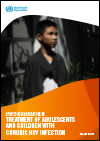Publications on Children

The country HIV snapshots prepared by UNAIDS’ HIV and AIDS Data Hub for Asia Pacific provide comprehensive information on the HIV epidemic and response in Asia and the Pacific countries. Download the country snapshots to find out the most up-to-date HIV data and analysis.

Marked inequalities and diverse epidemic trends affect progress in the HIV response in Asia and the Pacific. The HIV epidemic in the region disproportionately affects people from key populations, especially young people (aged 15–24 years), and their sexual partners. Download the regional factsheet to find out the most up-to-date HIV info, data and analysis.
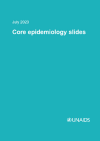
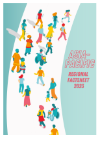
UNAIDS new Global AIDS Update report shows 29.8 million of the 39 million [33.1 million–45.7 million] people living with HIV globally are receiving life-saving treatment. An additional 1.6 million people received HIV treatment in each of 2020, 2021 and 2022.
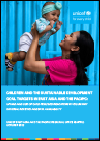
A vigorous follow-up and appraisal system for the implementation of the 2030 Agenda for Sustainable Development requires a streamlined process of reporting the agreed framework of indicators and statistical data to monitor progress, inform policy and ensure accountability of all stakeholders. The Voluntary National Reviews (VNRs) is a testimony to each country’s continued commitment to support and implement the 2030 Agenda for Sustainable Development and its 17 Sustainable Development Goals (SDGs).
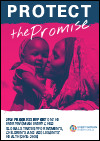
The 2022 Global Strategy progress report provides an assessment of the situation of women’s, children’s and adolescent’s health in this third year of the COVID-19 pandemic. The report presents abundant evidence showing that inequities persist despite great progress in reducing maternal and child mortality in the two decades leading up to the pandemic.
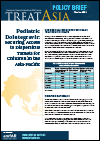
Facilitating access to formulations of the HIV medicine dolutegravir (DTG) that can be used by infants and children living with HIV in the Asia-Pacific is an urgent concern.
In light of recent U.S. and European regulatory approvals of a dispersible version of pediatric DTG, amfAR’s TREAT Asia program recommends steps that national HIV programs and advocacy groups can take in order to secure access to this medicine as quickly as possible.
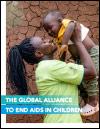
An end to AIDS in children, achieved through a strong, strategic, and action-oriented alliance of multisectoral stakeholders at national, regional, and global levels that works with women children and adolescents living with HIV, national governments, and partners to mobilize leadership, funding, and action to end AIDS in children by 2030.

These guidelines focus on the collection and use of person-centred data across the HIV cascade – from prevention, testing and treatment to longer-term health care – building upon 2017 and 2020 strategic information guidelines. The updated guidelines present a standard minimum dataset, priority indicators and recommendations to strengthen data use across HIV prevention, testing and treatment, and linkages to services for sexually transmitted infections, viral hepatitis, tuberculosis and cervical cancer.






